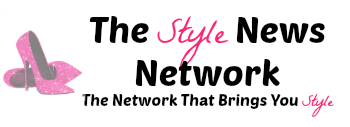How To Mix Henna / Benefits Of Using Henna In Your Hair. Henna can be an amazing treatment in your hair, that can easily add shine, moisture and overall strengthen your tresses. It can also be great at adding color to your hair without the damage. I’ve been applying Henna to my hair once a month for about three months now, and my hair has never looked better. I relieve so many compliments on my hairstyles, and I know that it’s because of my henna treatments. Look below for the mainly benefits of using Henna, and my be sure to watch my video on how I mix henna. It’s easier than you think!
Some of Benefits Include:
Stronger Hair – The lawsone (dye) molecule penetrates the hair shaft, binding with the keratin in the hair. This makes hair stronger, but also is one of the qualities that makes henna removal near impossible. Henna also coats the hair and fills in rough spots on a frayed cuticle. This adds a second layer of strength, but it DOES NOT lock out moisture.
Smoother, Shinier Hair – Henna, as stated above, does coat the hair, but it is a permeable coating that does not lock moisture out. The henna helps fill in rough spots on the cuticle. With the cuticle rough edges smoothed over, the hair feels smoother and the cuticle takes a lot less damage during combing and manipulation. It takes several days for Henna to stabilize. It becomes more flexible and durable as it oxidizes and cures–it is in fact a plant resin that is flexible and solvent enough to penetrate the hair at the cuticle, carrying pigment with it.
Non-Fading Red – Anyone that has used red chemicals dyes knows how badly they fade. Henna may fade a little after the first application, but after the second application fades very little.
The Absence of Chemicals – Chemical dyes are not only VERY damaging to hair, they can also cause scalp burns, allergic reactions, and recently studies have linked long term use to cancer.
While there are benefits, there are also some drawbacks as well:
Application Process – Henna can be hard to apply evenly on your own, can be a huge mess, and is tiring on the arms and neck. It also has to be left on for a longer time than commercial chemical dyes (4-12 hours), so more time has to be slated for the process.
Experimentation – To find your ideal mix, dye release time, application time, rinsing method, etc. all require some experimentation. It is not out-of-a-box color, and it may take some tweaking to find your ideal results. Your perfect color is never a guarantee.
Dry Hair – Some people report dry hair after using henna. It mimics a protein treatment and you MUST follow up with a moisturizing deep conditioner.
These may be pros for some, cons for others:
Loss/Reduction in Curl – Many users of henna report a loss of curl. This is by no means a universal effect, and should be neither discounted, nor counted on. It seems that wavies (s curls) are the most susceptible to this, though some curlies are as well.
Cannot Lighten Hair – Henna cannot lighten your hair, ever. On some colors of hair it may appear to brighten it, but you should count on any color you get with henna being darker than what is already on your head.
Darkening with Multiple Applications – Henna will darken with multiple applications. If one wants to keep a lighter color, only the roots should be touched up, and repeated whole-head applications will progressively make the color less orange and more burgundy.
Cost – Depending on your mix, how much hair you have and how often you henna, it may either be more or less expensive than chemical dyes. Though that doesn’t factor in one very important thing… the price your hair pays on chemical dyes. Many people find that they only need to do a full-length application one or two times, and the because henna doesn’t fade much, they can save a lot of cost by only redoing the roots.
The Smell – Some people love it, some people hate it, but the smell of henna lingers in your hair for awhile after the application, often reviving when your hair is wet. Some herbs, such as ginger, can be added to shift the smell of the mix, but nothing will eliminate it entirely. Most people feel it has a smell somewhat like grass or hay.
Variable Color – Henna can and does shift in color depending on the light the hennaed hair is placed in. The same head of hair can go from burgundy to firey copper, just depending on the light.
More Info
How To Mix Henna. In this video I show you how to mix henna. I used water, coffee , two different kinds of Henna, and plain yogurt. The two different kinds of henna that I used was Brahmi Powder and Fresh Jamila Henna Powder. I henna my hair once a month and it’s great for adding shine to your hair, and it can also work as a protein treatment. You can purchase the Henna from http://www.hennasooq.com/.
source: http://www.curlynikki.com/2008/10/im-henna-head.html
Related articles








